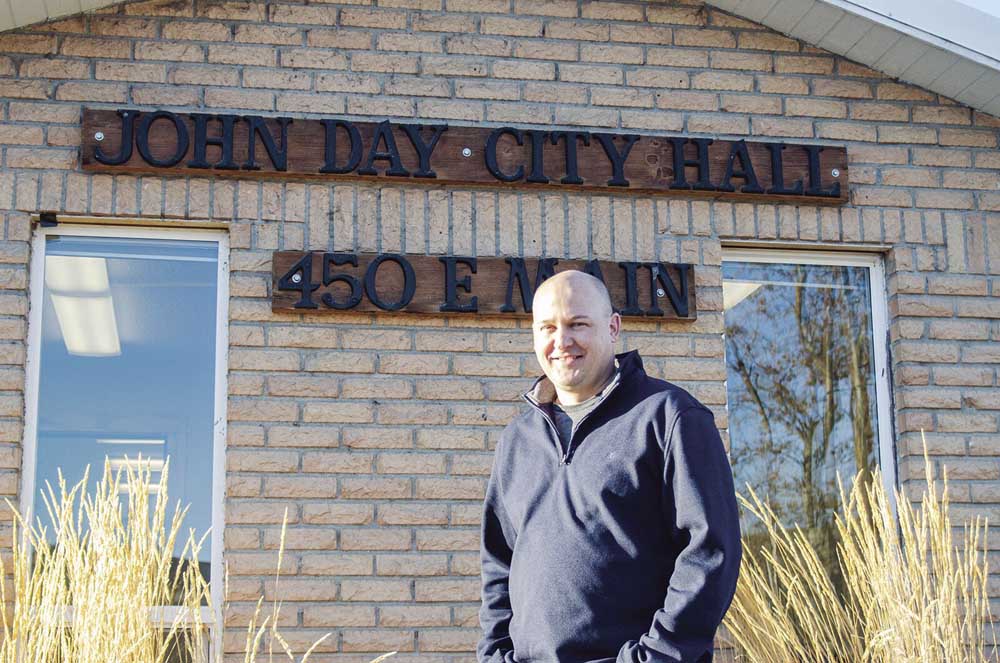Gubernatorial front-runners stand poles apart
Published 4:00 pm Tuesday, October 29, 2002

- Kevin Mannix (left) and Ted Kulongoski
Steeped in law backgrounds, the Democratic and Republican candidates for Oregon governor veer in different directions when tackling the state’s economic and budgetary woes.
Ted Kulongoski, the Democratic nominee, approaches complicated budget issues with analytical forethought, as though he were preparing to issue a legal opinion from the bench. Perhaps, this scrutiny reflects his four and a half years as an Oregon Supreme Court justice.
Kevin Mannix, the Republican nominee, also brings legal heft to the campaign. However, while he worked as a practicing attorney for 27 years, served as an Oregon assistant attorney general, an assistant attorney general in Guam and an administrative law judge, Mannix presents himself as a skeptic of government “solutions.” The Mannix platform seeks less of a “think-tank” approach to budget fixes but instead leans toward populist reform and traditional Republican themes of limited taxes and curtailed regulation.
But if the 2002 governors’ race comes down to two issues, those issues will be “schools and rules.” In the wake of five special sessions of the Oregon Legislature, primary-school funding remains in limbo, causing K-12 education to take center stage in the gubernatorial campaign. Meanwhile, Oregonians continue to find themselves enduring the nation’s worst unemployment rate, begging the question of whether the state’s tax regulations and rules help or hinder the economy.
The Blue Mountain Eagle listened to both candidates discuss these and other issues, Mannix via telephone on July 26 and Kulongoski in person at a sitdown roundtable interview in Portland Sept. 27. Following is an analysis of both candidates, one of whom is expected to wear the mantle of Oregon’s next governor following the Nov. 5 general election.
Candidates share platforms, reveal differences in philosophy
Ted Kulongoski refers to “John” repeatedly when discussing his platform. For example, he says he wrote to John in July about the problem of overcommitments against Oregon’s Public Employees Retirement System. When he is pressed to clarify, not on the PERS issue but about who “John” is, Kulongoski explains that he is talking about his close friend, John Kitzhaber.
Kevin Mannix, Kulongoski’s opponent in the race for Oregon governor, also refers to John Kitzhaber. He does so in less endearing terms. Asked about the downturn plaguing natural resource-based economies in Oregon, Mannix says, “I really do think our current governor has been hostile to rural communities and natural resource industries.”
Kulongoski and Mannix, a Democrat and a Republican, respectively, mix like oil and water in this year’s governors’ race.
One is a pragmatist interested in finding stable funding for education. The other is a reformer campaigning against higher taxes and economically stifling regulation.
When talking about the state’s beleaguered $12.1 billion budget, with its $450 million-and-counting revenue shortfalls, Kulongoski says, “The answer to this (problem) is focusing on the K-12 issue.” He means the hot-button issue of the 2002 gubernatorial campaign – the $5.2 billion primary-education chunk of the state budget. Kulongoski, perhaps casting his memory back to his tenure as a state legislator, adds with weary confidence, “This answer ultimately will not come from the legislature.”
Mannix, also a former legislator, also expresses skepticism of government. However, in a departure from his opponent, he campaigns against new taxes and urges greater empowerment of business.
“This campaign is emphasizing reform in state government and providing our communities with hope in the future,” he says.
Mannix says he is committed to reducing government regulation by 50 percent. Kulongoski has assailed this campaign promise in political ads by charging that Mannix will gut regulatory protections for citizens.
Kulongoski, for his part, exposed himself to criticism from his opponent by backing a Jan. 28, 2003, ballot referral seeking temporary income tax increases to help prevent funding shortfalls for public schools.
“I think you get one shot at this,” Kulongoski says, advocating for the tax referral.
However, he acknowledges that a long-term fix will require study, which he proposes to do through an inclusive brainstorming approach.
“I’m able to get very very diverse groups together,” he says.
Mannix also champions an open-door approach to governance, but he scoffs at bureaucratic “touchy-feely” theories. He took this stance when asked about proposed board of forestry goals.
“I think we need to get back down to brass tacks,” he says, discussing the proposed state goals. “We stand here in the midst of God’s bounty. Let us make practical, positive use of it with the understanding that future generations need to make practical, positive use of it.”
Kulongoski appeals to the other side of the environmental equation. In his campaign literature, he highlights the fact that, as attorney general, he “went after corporate polluters – enforcing laws and regulations, and making sure that the polluters, not the taxpayers, pay the bill for cleaning up our air and water.”
Mannix sees fewer problems with polluters and more problems with overzealous government bureaucracies.
On Senate Bill 1010, the state’s mandated water-quality planning act for agriculture, he says, “I would have been very careful not to impose any requirements beyond the actual statutory requirements because the rules are being imposed pretty aggressively. I would have approached it from the question of what we have to absolutely do to prevent federal encroachment.”
Both candidates shy away from alienating voting blocs.
Mannix tries to straddle the Cascades by pointing out, “The governor is the one elected official who represents all the people, and serves as a counterweight to any interest group. To me there is no such thing as an urban-rural divide.”
Kulongoski, who has done most of his campaigning in the Willamette Valley, sees himself as the more experienced candidate (along with his legislative and judicial experience, he served in the executive branch). He argues, “I have those skills and the vision that I think the public needs right now.”
Mannix takes one tongue-in-cheek jab at a constituency. He says, “I recognize that I will alienate the 3 percent who are eco-activists, but the vast majority of citizens will see from my actions, and my words that I love this environment that I live in. … I want to protect it, but I don’t want to lock it up.”
While Mannix focuses on business expansion and common-sense regulation, Kulongoski warms to the topic of school funding.
“In the last 30 years, we have put out 20 statewide initiatives trying to find public funding for schools. Every one of them has failed except one,” and that one – a safety net concept – eventually was rendered ineffective, he says.
“Everything we have done over the past 30 years hasn’t worked,” Kulongoski contends.
Who will fix these problems? Both candidates hope to attract “swing” or undecided, nonpartisan voters by crossing the aisle in their campaign rhetoric.
Kulongoski on business retention: “There’s a great deal of attention to the budget, but the truth is if we can’t grow the economic pie … the state can’t pay for K-12 (education). I don’t think that the state creates the jobs. The jobs are created in the communitieis and the private sector.”
Mannix on the “One Oregon” theme: “You won’t see me attacking urban Oregon while I’m in rural Oregon and vice versa.”
The race of the attorneys. On Nov. 5, voters will render their verdict. The winner in the court of public opinion will stand at the swearing-in to become next Oregon governor.





